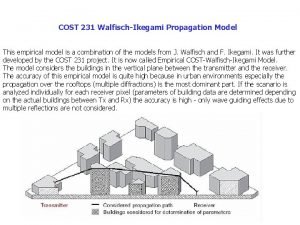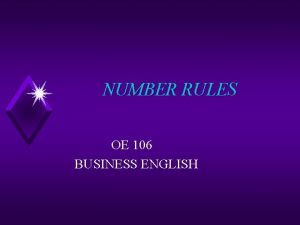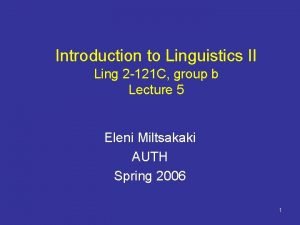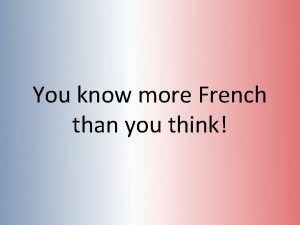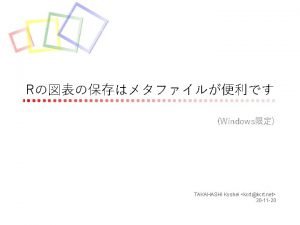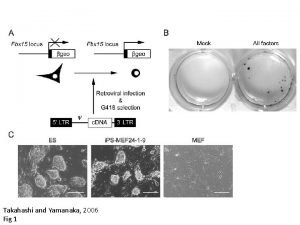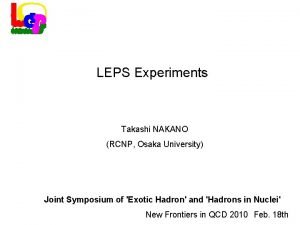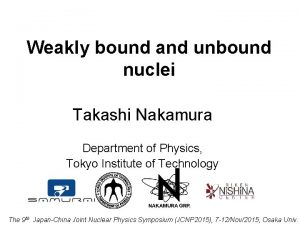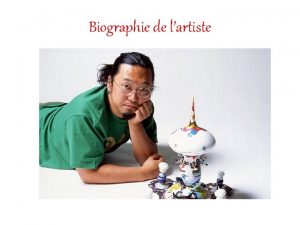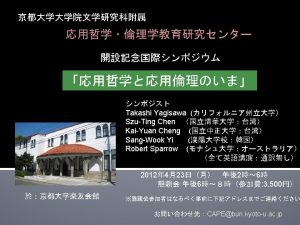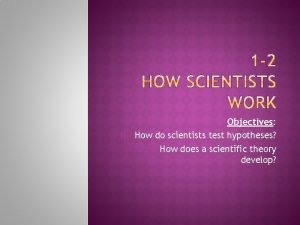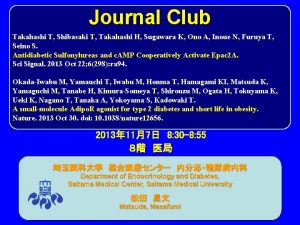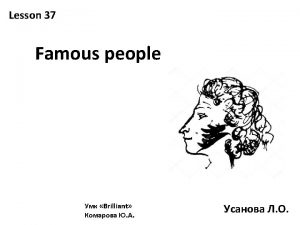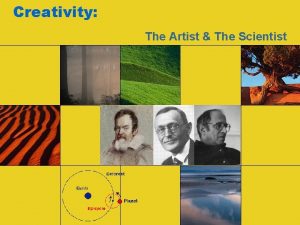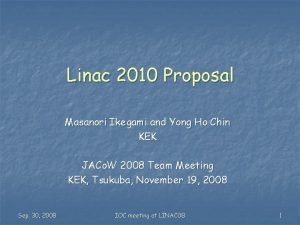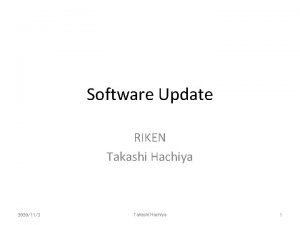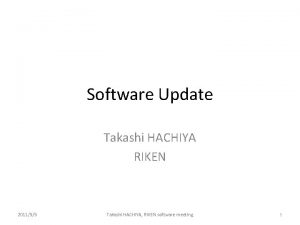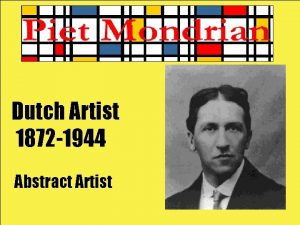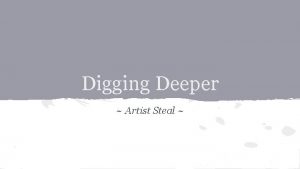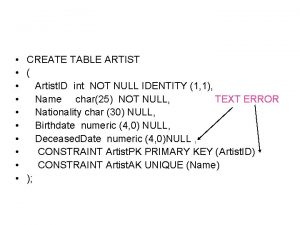Takashi Ikegami Scientist Artist Takashi alternatively spelled Takahashi

















- Slides: 17

Takashi Ikegami Scientist & Artist

Takashi (alternatively spelled Takahashi)

Background ● ● ● Ph. D in Physics from University of Tokyo, 1987. Professor in Department of General System Studies at University of Tokyo. Researching Complex Systems and Artificial Life. Wrote a book, “Life Emerges in Motion”; can’t find it anywhere. Has a very frustrating website for his laboratory! Lots of collaborations with psychologists, musicians, chemists/physicists, and more. ● Appears to have a number of patents. ● And a lot of publications! 8 journal publications in ‘ 14. 33 since ‘ 10. ● Relative newcomer to the field.

A-Life Research Areas ● Chemical A-Life o Self-moving oil droplets behaving like fatty acids. ● Robotics o Experiments with redundant sensor networks. ● Computer Simulations o o Several things, esp. neural networks. Group evolution, communication evolution.

Art + Science = ? Major themes of abstract audiovisual art and sound art. Collaborations with sound (noise? ) artists, providing visual neural network responses to the music. Very chaotic!

Mind Time Machine

Senses → Mind Sensory overload “massive data flow” used on empty (untrained) neural network. Neural network evolves around its senses! Gains patterns and engages in visual “thinking”.

Mind Time Machine ● 3 large screens, 15 video cameras ● Uses neural networks and video feedback for learning and pattern recognition. Very chaotic looking, but interesting patterns. When space is empty, can still watch machine “think”.

MTM Video

MTM Cont’d Responds to its environment (quiet on rainy days) and has daily patterns (less active in the morning, very active at night). Can be interacted with; people can stand inside it, and contribute to the sensory input.

Philosophical Takeaways ● Maximalism vs minimalism. ● Senses → intellect, not vice versa? ● Feedback as memory. Not trying to solve a problem, just an experiment!

Other Research The MTM appears to be a culmination of much of his research - a “life’s work so far”. Sensor networks, human-computer interaction, neural networks, robotics. Giving artificial agents senses of time, self, and deep perception of their surroundings.

Other Research Can’t find videos on most of his stuff : ( Autonomous Sensor Network “Sound Bookshelf” Training agent simulations to account for time in estimating distance and resource renewal rates.

Other Research Pictures

Motility at the Origins of Life

More videos ● Big Picture Complexity TEDx talk (9 min) ● Using the MTM to accompany live noise music. (6 min) ● Ted. Talent talk: "The case of complexity over simplicity", (5 min) ● Cellular Automata Cell forming (2 min)

Impressions ● Does not seem to have a big ego. ● On the flip side, big egos make themselves easy to research. Good with the bad. ● Interests seem to parallel mine: more interested in the aesthetics than the usefulness.
 Ram is alternatively referred as
Ram is alternatively referred as Walfisch ikegami model
Walfisch ikegami model 106 spelled out
106 spelled out Hayao miyazaki and walt disney
Hayao miyazaki and walt disney Words that are spelled the same but pronounced differently
Words that are spelled the same but pronounced differently Torrance memorial cardiac rehab
Torrance memorial cardiac rehab Words that are spelled the same but pronounced differently
Words that are spelled the same but pronounced differently 2 pac changes
2 pac changes Elizabeth ancarana
Elizabeth ancarana Takahashi kyohei
Takahashi kyohei Takahashi and yamanaka 2006
Takahashi and yamanaka 2006 Reverse image search
Reverse image search Takashi nakamura
Takashi nakamura Takashi murakami biografie
Takashi murakami biografie Takashi akasaka
Takashi akasaka Takashi yagisawa
Takashi yagisawa Why are controlled experiments sometimes impossible
Why are controlled experiments sometimes impossible Chapter 4 cell theory and cell study
Chapter 4 cell theory and cell study

